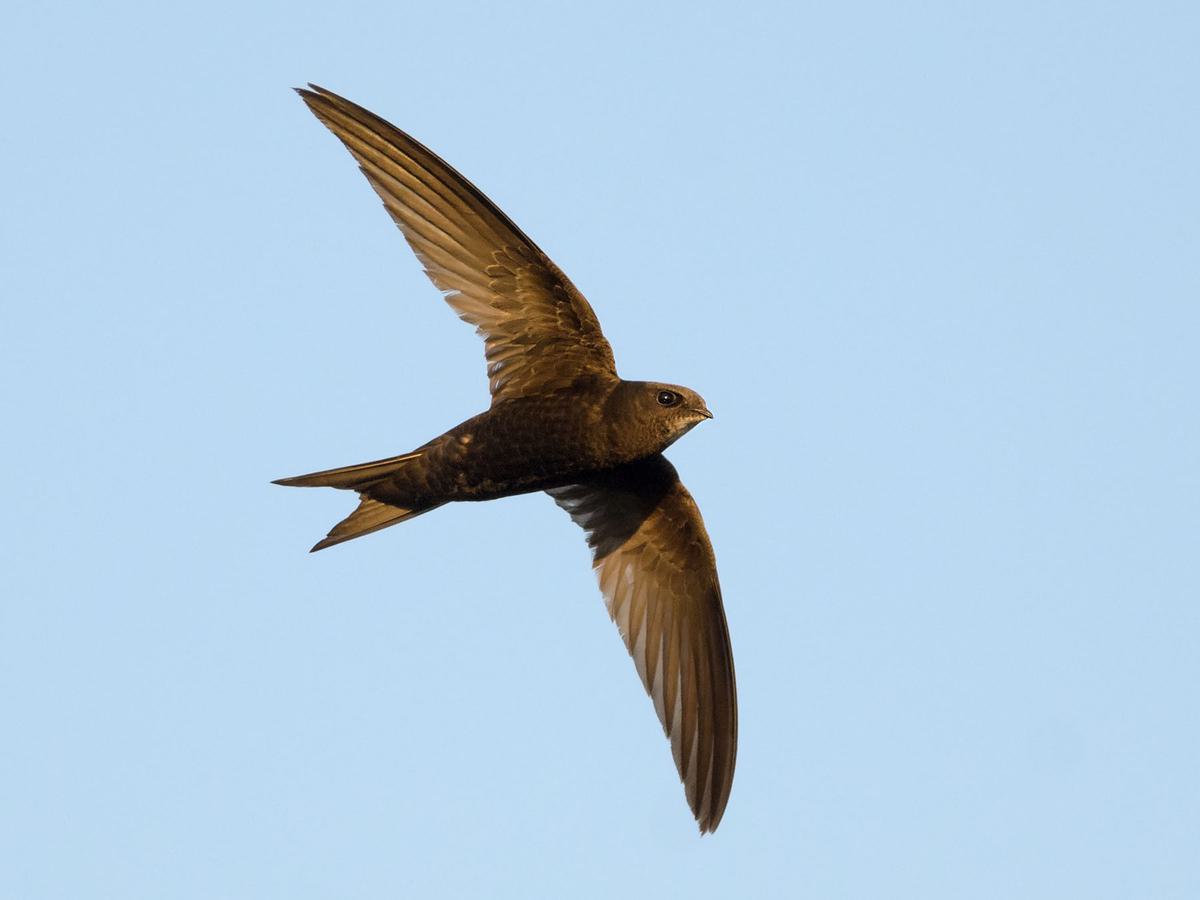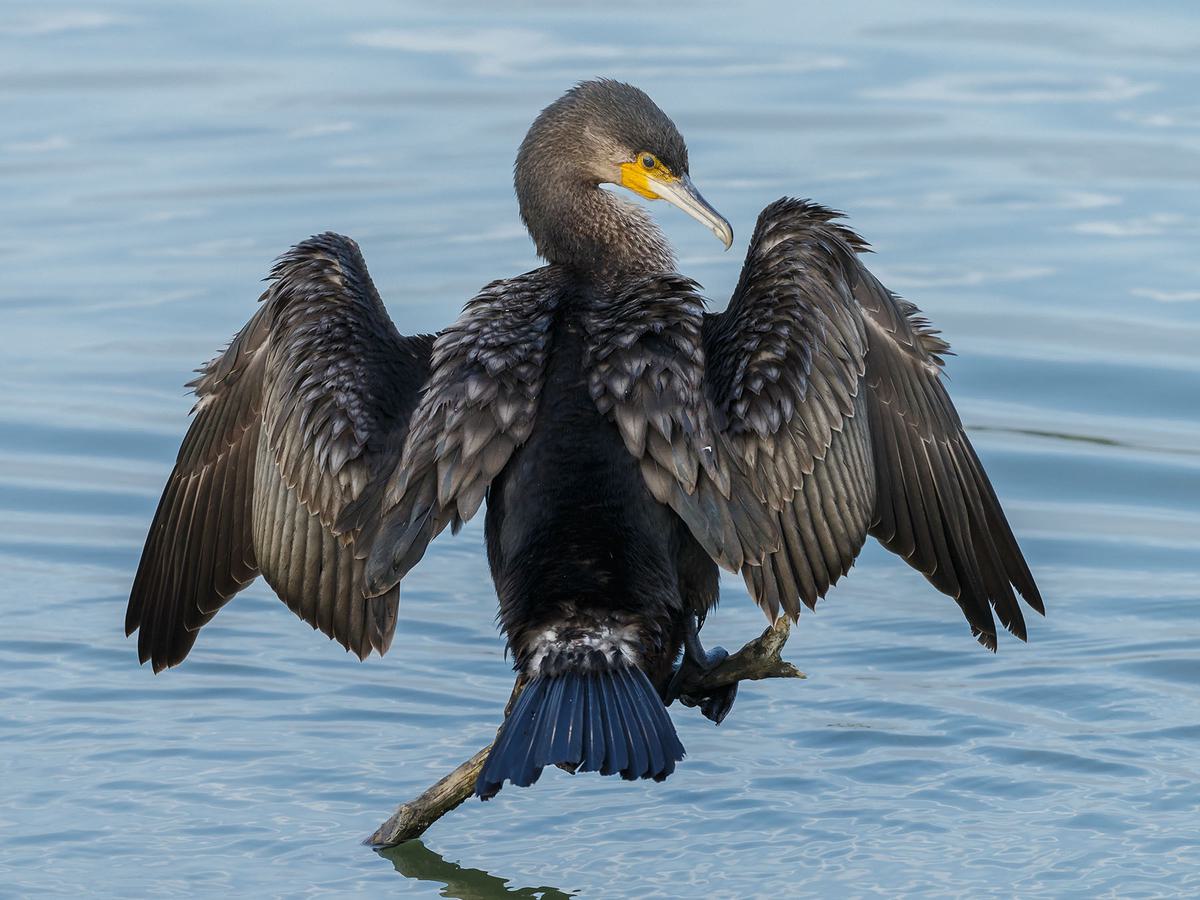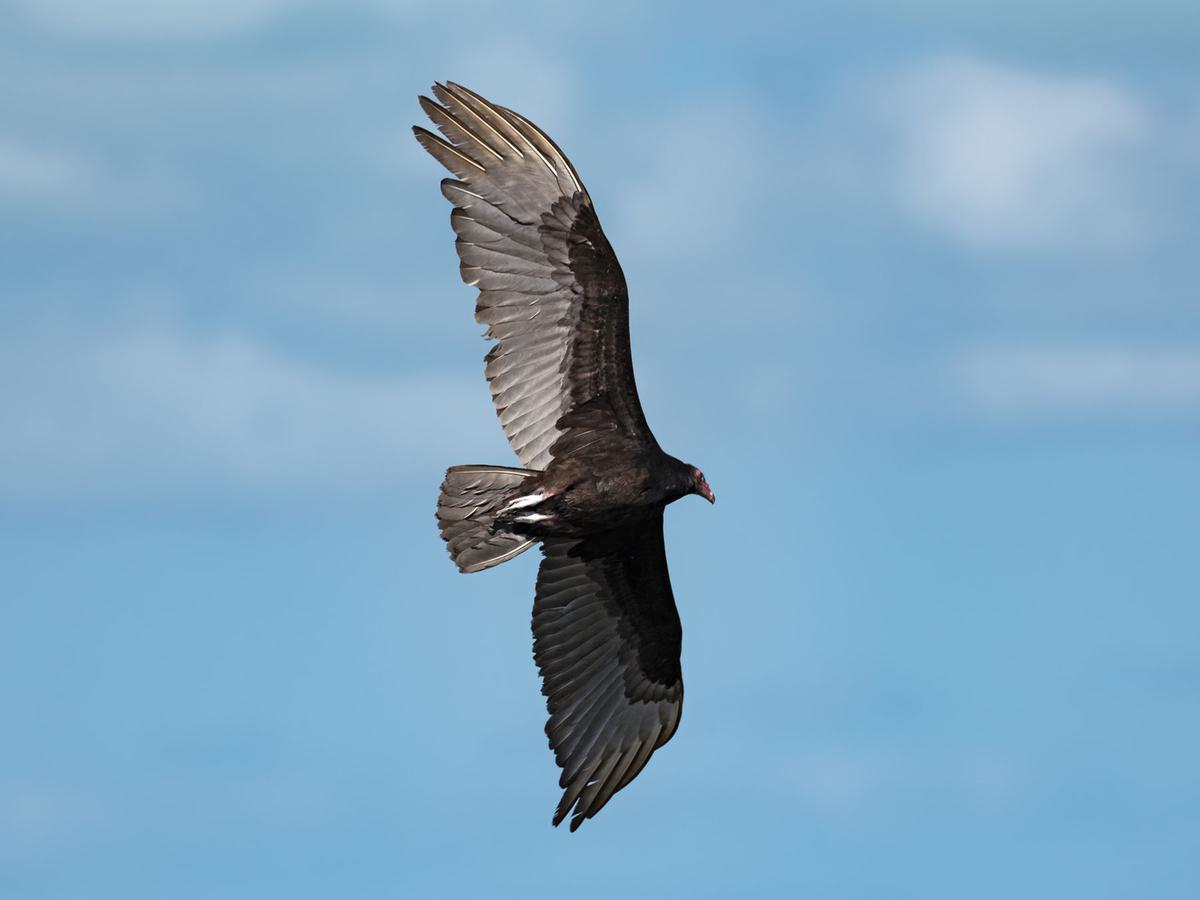Respiratory Muscles and Breathing Mechanics of Birds

Birds possess an incredibly efficient uni-directional respiratory system, necessary for energy-expensive activities like sustained flights during migration, acrobatic hovering and hawking, and high-speed pursuits.
Maintaining airflow through their complex system of air passages, sacs, and lungs requires muscular actions, but birds don’t have a diaphragm like we do. Instead, birds rely on coordinated contraction and relaxation of several different muscles to alter the air pressure in their respiratory system.
Here, we take a closer look at avian breathing mechanics. Read along with us to learn how air is pushed and pulled through birds’ lungs.
Understanding Avian Breathing
Basics of Bird Respiration
The bird respiratory cycle is radically different from mammalian breathing. Air takes a uni-directional route through the avian respiratory system, following a path through nine expandable air sacs, a pair of inflexible lungs, and a network of branching bronchi.
Despite the differences, the end goal is the same, with oxygen absorption and carbon dioxide disposal essential for survival. However, birds also discard heat while breathing, which is vital in hot climates and during high-energy activities like sustained flight and running.
Respiratory Cycle Phases
The avian respiration cycle is non-tidal, requiring four stages for each air parcel to enter and then exit the body.
When birds inhale, most of the air bypasses the oxygen-absorbing surfaces of the lungs and passes into posterior air sacs. When they exhale, this oxygenated air enters the lungs, where gas exchange occurs.
On the next inspiration, the deoxygenated air enters the anterior air sacs and is finally expelled on the subsequent exhalation.

Close up of an exhaling Blackbird
The Role of Respiratory Muscles
Primary Respiratory Muscles
Birds don’t have a diaphragm like humans and other mammals, so they rely on different muscles to move air through their respiratory system.
Several muscles are involved in moving the sternum and ribcage during avian respiration, alternately expanding and contracting the air sacs.
Appendicocostals, serratus profundus, and scaleneus are among the muscles involved in inspiration, while obliques, intercostals, and latissimus dorsi are involved in expiration.
Muscle Coordination
The muscles of the respiratory system push and pull air through the air sacs and lungs by altering the pressure in the body cavity.
Negative pressure or sucking action is created when the bird’s sternum (breastbone) and furcula (wishbone) are pushed forward and downward, and the ribs move laterally. The opposite is caused by muscle contraction that creates a positive pressure to expel air.
Forward and downward movement of the sternum is hindered when birds are at rest on the ground or incubating eggs, but they have another option. Muscles attached to spur-like projections on the ribs called uncinate processes play an important role in ventilation at these times.
Mechanics of the Avian Lung
Air Flow in the Lungs
Air flows through the avian lungs in a single direction, ensuring a much higher proportion of inspired air can come into contact with the thin-walled blood capillaries where carbon dioxide and oxygen are exchanged.
By contrast, the air in our lungs reaches a ‘dead end’ and is incompletely expired when we exhale. As a result, new oxygenated air mixes with deoxygenated air, which is a far less efficient system.
The Function of Air Sacs
Birds have a system of thin-walled, transparent air sacs that hold oxygenated and deoxygenated air during the various phases of the respiratory cycle and ensure a constant flow of oxygenated air through the system. These air sacs hold a large volume of air and make up about a fifth of a bird’s body.
Unlike our expandable lungs, avian air sacs are not vascular and do not contribute to gas exchange. Muscular action that expands and contracts the coelom (body cavity) is responsible for increasing and decreasing the air pressure in the air sacs and driving air movement.

Air sacs can make up about a fifth of a birds body
Breathing During Flight
Synchronization with Wingbeats
Flight puts an increased demand on the avian respiratory system as more oxygen is needed for this high-intensity aerobic activity. While birds can breathe at rest, the action of flapping flight can also help them pump air through their lungs.
Flight is primarily powered by the alternating contractions of large muscles that attach to the sternum and humerus (upper wing bone). The pectoralis major pulls the wings down and toward the body, creating lift and thrust.
This motion also creates positive pressure in the respiratory system, which may correlate with exhalation in some birds. The wings are lifted by contracting the supracoracoideus muscles, and this has the opposite effect, expanding the air sacs to draw in air.
Adjustments in Flight
Flight is a dynamic process that occurs in three dimensions with many different variables that affect performance. Bird body size and wing shape are among the most important, but environmental factors also play a huge role in respiration on the wing.
Birds can make adjustments to compensate for the following environmental variables in flight.
- Temperature varies with altitude, affecting bird’s ability to thermoregulate. Some birds migrate at high altitudes during the day but fly much closer to the ground at night.
- Oxygen availability decreases with altitude, creating a potentially dangerous hypoxic environment for high-flying species. Birds have a naturally efficient respiratory system, and many species are uniquely adapted for respiration in thin air.
- Flying technique has an important effect on oxygen demand. Constant flapping flight is relatively energy-expensive, while soaring and gliding using natural air currents places less strain on the respiratory system.
- Wind direction and strength may benefit or hinder birds. Air currents vary with altitude, something that birds can use to their advantage during migration.

Some birds make use of natural air currents to help them soar with minimal effort - Turkey Vulture
Adaptation and Evolution
Evolution of Respiratory Muscles
The evolution of a uni-directional respiratory system driven by muscle-powered air sacs has allowed avian lungs to become the refined organs we see today. Although smaller than our expanding lungs, they have a significantly larger area for gas exchange.
Birds are said to have the most advanced respiratory system of any air-breathing vertebrate. Still, many of the hallmarks of the modern bird breathing system originated long before avians evolved and are seen in the dinosaur fossil record.
Species-Specific Adaptations
All birds have remarkable respiratory systems, although there are some interesting variations in species with different habitats and foraging behaviors.
The impressive Emperor Penguin, for example, can hold its breath for over twenty minutes while diving to depths of over 1000 feet, where pressures are high. These birds slow their heart rate to reduce oxygen demands underwater while relying on myoglobin to supply oxygen to their muscles.
On the surface, these birds increase their respiratory rate to expel carbon dioxide and minimize heat loss with a special system in their nasal passages.
In contrast, high-altitude species like the Andean Goose survive at over 10,000 feet above sea level throughout the year and often occur much higher. These birds have much larger lungs and respiratory systems than low-land species, coupled with a slow ventilation rate and specialized hemoglobin in their blood to maximize the oxygen they can absorb from the air.

Andean Geese are a high-altitude species, which can live at over 10,000 feet above sea level
Summary
From the dark depths below polar sea ice to the thin air of the alpine Andes, avians have evolved to extract the oxygen they need to survive under incredibly challenging conditions.
Even the regular backyard songbirds we see on a daily basis require highly efficient lungs to keep up with the metabolic demands of flight. Such advanced respiration relies on several muscles that contract and relax in a coordinated four-stage breathing cycle to ensure a constant flow of oxygenated air through their inflexible lungs.
Most of us will never get to see the avian respiratory system firsthand. However, you only have to look up to appreciate the remarkable consequences of one of the most advanced respiratory systems on the planet.
So, next time you see a bird flying overhead, take a moment to consider the mechanics involved, as the muscles of the respiratory system work in concert with the flight muscles to keep these avian athletes flapping!